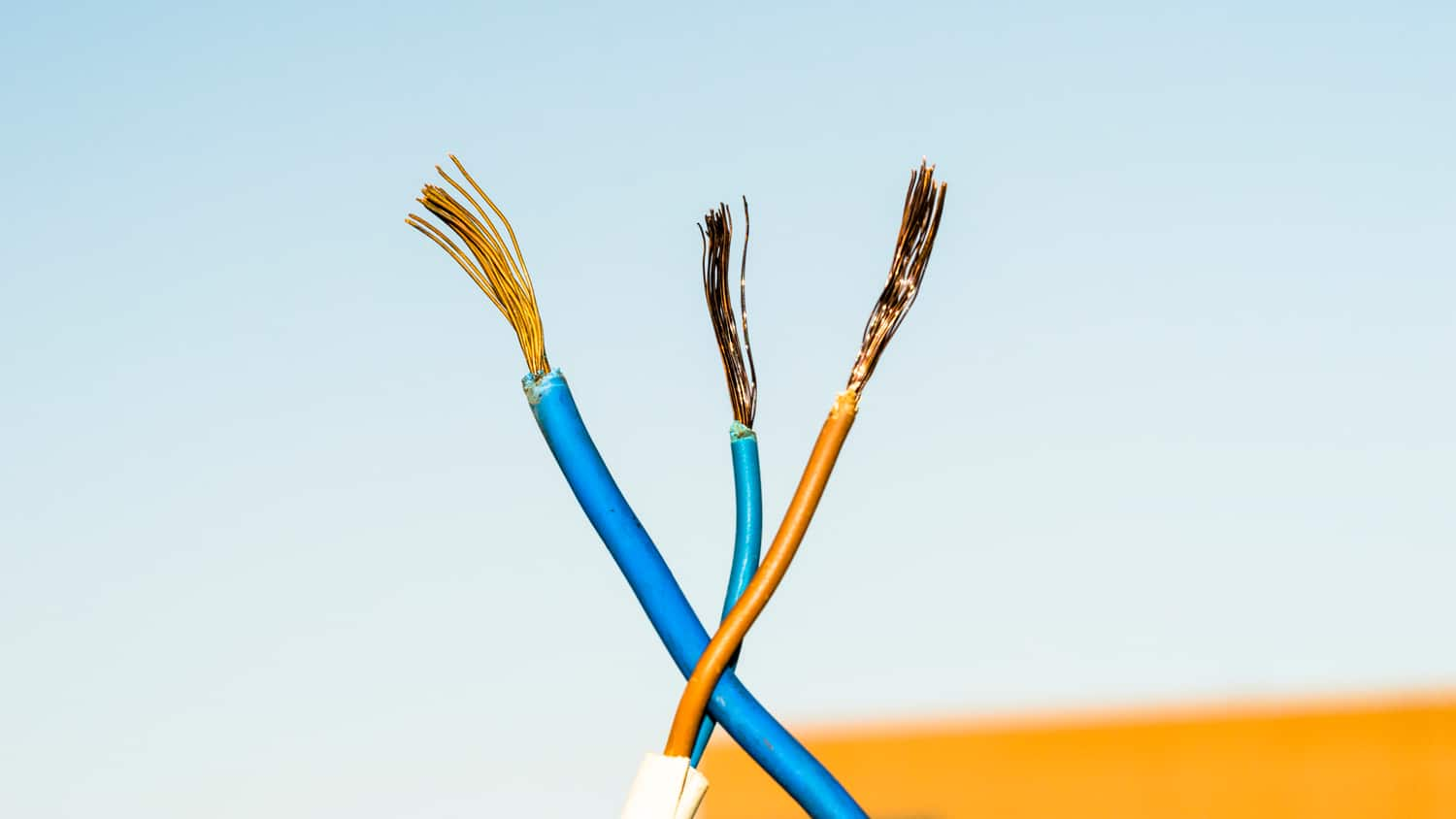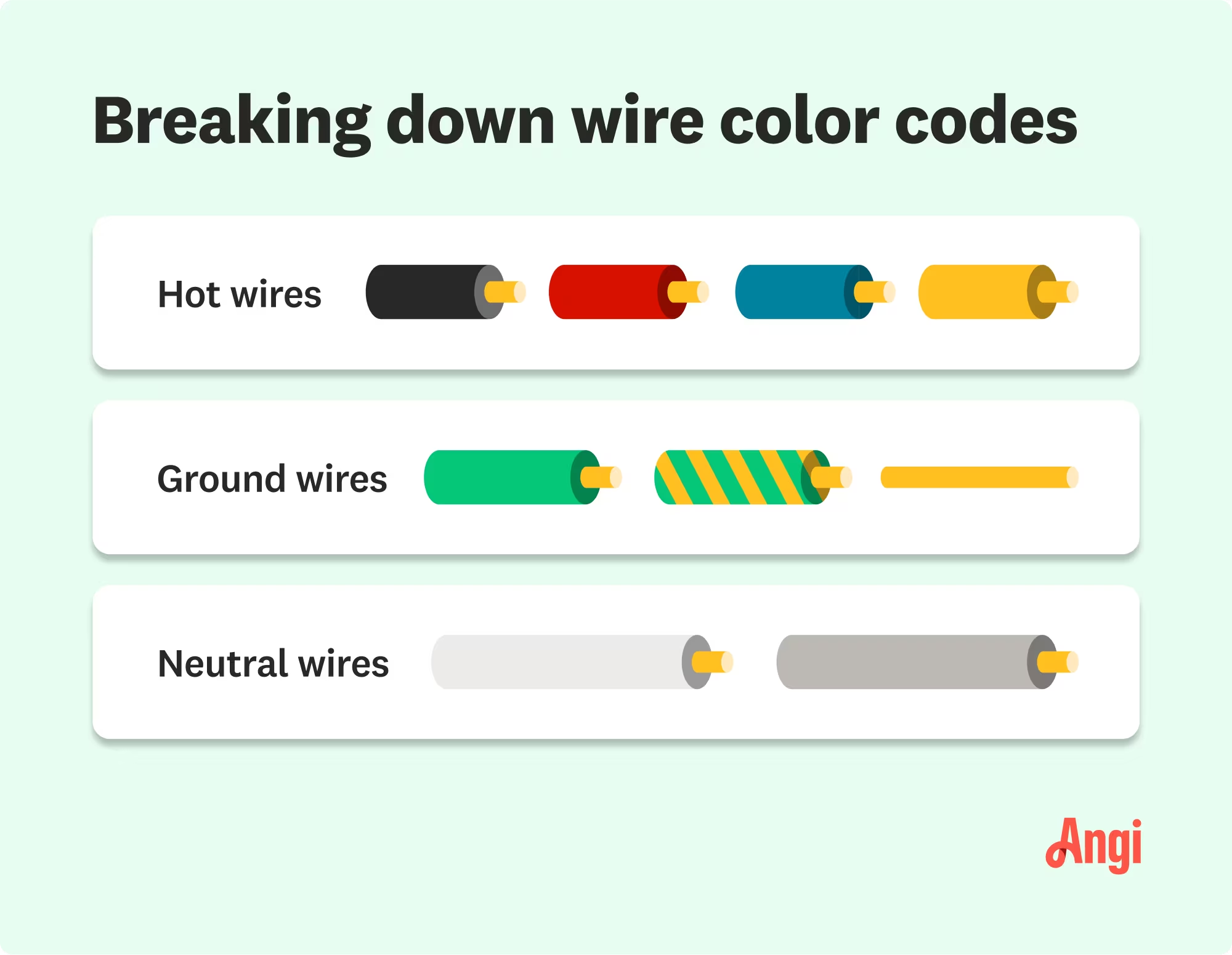
The cost to move an electric meter depends on how far you’re moving it, whether it needs replacing, and the cost of labor near you.
Untangle the difference between brown and blue wires


Bare copper (brown) wires are known as the live wires, as they send electricity to the appliance.
Blue wires can be neutral or live wires, but they are mostly used in switches.
In the U.S., standard electrical wire colors can vary.
Residential wiring doesn’t use brown sheathed wires.
If you’re tackling an electrical wiring project, understanding the wire color code is essential to completing the project safely. But if you see a brown and blue wire, which is positive?
Standard U.S. wire colors are typically black, red, gray, white, green, and bare copper. Before beginning any electrical project, make sure to shut off the power supply and ensure you have the appropriate knowledge and skills needed to complete the project safely. It’s best to hire an electrician near you to complete electrical projects. Let’s take a look at the difference between brown and blue wires.
In residential wiring, the bare copper wire is the closest to brown that the U.S. uses and acts as the ground wire, which channels excess electricity into the earth to protect your home. On the other hand, blue wires are considered “sometimes hot,” meaning they are sometimes used as neutral wires, but they can transfer electricity in some scenarios. The blue wire is positive in wiring that includes three- or four-way switches, ceiling fans, and three-phase power systems.

In the U.S., the National Electrical Code (NEC) states that neutral wires must be gray or white and ground wires must be bare copper or green. The positive, or hot, wire color can vary based on industry-accepted standards. The standard wire colors are coded as follows:
Positive (hot) wires: Black, red, blue, yellow
Neutral: White or gray
Negative (ground) wires: Bare copper, green, green with a yellow stripe
It’s important to note that the U.K. uses the International Electrical Code (IEC) to color code its wires. In the IEC, the brown wire is positive and the blue wire is neutral.

The U.S. doesn’t use brown sheathing for wires in residential applications, so if you see a brown wire in your electrical wiring, it is likely the bare copper wire used as a ground wire. Ground wires can also be green or green with a yellow stripe. A ground wire is attached to the appropriate terminal on the switch and then runs to the ground.
This type of wire provides a place for electricity to disperse if there is too much electricity in the system, often due to a power surge, or if the typical pathway through the positive and neutral wires is damaged. A ground wire isn’t necessarily needed in order for a device to operate, but it adds important protections for the safety of the system.
Blue wires can be neutral or live, depending on the use-case scenario. Here are the places you can expect to see blue wiring.
Three-way switches control an outlet or fixture from two different locations. They’re typically found at either end of a hallway, at the top and bottom of a staircase, and in large rooms with two separate entrances.
A standard single-pole outlet only has two terminals, but a three-way switch has a third terminal. This third terminal connects to a traveler wire that runs between the two switches to connect. Three-way switches can use a blue wire as the traveler wire that links the two switches together.
A four-way switch is used in conjunction with a three-way switch to add another outlet or fixture control in another area of the home. They are commonly used in large rooms with more than two entrances or in a garage entryway space where the light may need to be turned on or off from inside the home, inside the entryway, and inside the garage. Four-way switches cost more than a standard single-pole switch at $10 to $20 each, but they add convenience and safety.
Ceiling fans are another fixture that uses positive blue wires. If the ceiling fan also includes a light fixture, there will likely be a blue wire from the ceiling fan that will connect with either the black or red wire from the electrical box and will control the light. This additional feature can make ceiling fan installation a little more complicated, but it’s usually worth the extra set-up effort.
Three-phase power commonly used in commercial and industrial wiring has three positive wires —black, red, and blue—and delivers a larger electrical load to run larger motors and more equipment. Brown sheathed wire, as opposed to bare copper, is also used as a positive wire in three-phase power for industrial equipment.
From average costs to expert advice, get all the answers you need to get your job done.

The cost to move an electric meter depends on how far you’re moving it, whether it needs replacing, and the cost of labor near you.

Electrical panel replacement costs $530 to $2,100, depending on the location, the type of hardware, and any required building materials.

Updating broken and outdated light switches isn't as tricky as you might think. We'll cover the considerations and cost to install a light switch in this guide.

Learn how to wire an outlet switch combo receptacle in various ways to adapt an existing wired location for several applications.

Wondering who to hire for electrical work on home additions? Compare electricians and electrical contractors to see how pros get the job done.

Here’s what you need to know to reset an outlet without a reset button. Follow this guide for resetting an outlet in a snap.